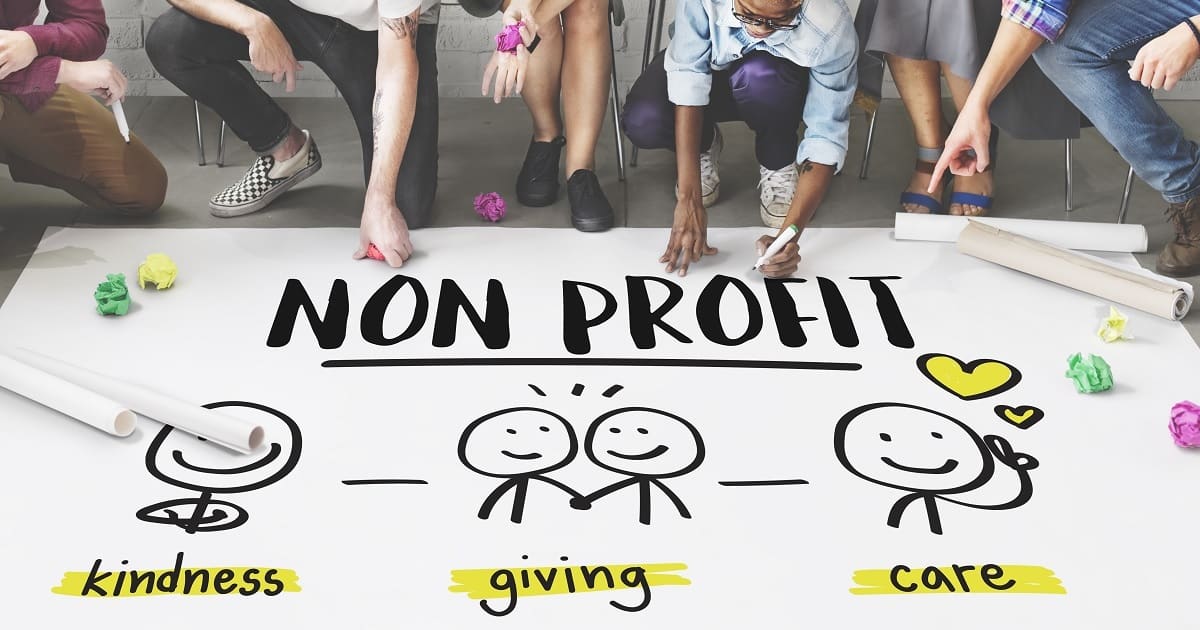
Fundraising
Article | July 15, 2022
It's not difficult to learn how to market your non-profit. Organizations can take a lot of simple steps to get in front of their target audience, inform the public, and win more people on board for their cause. These four stages will help kickstart marketing initiatives and put them on the right track to achieving their company's objectives.
The non-profit is missing out on critical chances if its only marketing efforts are to organize an annual benefit event and periodically update its website. For a non-profit to expand and remain active, consistent marketing is just as important as for 'for-profit' enterprises. Without public awareness, even the greatest charitable group will be unable to accomplish anything. To properly carry out its objective, a non-profit needs strong ties with funders, volunteers, the media, and even governmental bodies.
In order to retain relationships, attract regular donations, and keep an organization's activities in the public view, continual marketing initiatives are necessary. However, there are still stages that every employee can help with to establish a marketing plan, even if the non-profit doesn't have the funds for a professional marketing team.
Choose the Target Market
A non-profit must identify its target audience and the actions it wants them to adapt before it can take any steps to advertise its organization. Organizations can adjust their marketing initiatives to reach their target audience and motivate them to act once they are aware of who they are and where to find them. For example, they might find it helpful to look into firms that are comparable to their own to discover how they sell to the same demographic.
Set Measurable Objectives
Organizations can't determine whether their non-profit marketing is successful without knowing their goals. They are better equipped to assess what is working and what needs to change when they have quantifiable goals. After establishing their objectives, they should plan with their team how they'll gauge their success in achieving them.
Curate Marketing Materials
Marketing materials are necessary for non-profits whenever they engage with the public. These materials should be customized for their group, exhibit their achievements, offerings, and core principles, and provide information on how to get involved or donate.
Build a Database
Once the promotional strategies are ready, it's time to put them to use. But before they accomplish that, organizations must create a database of present and potential members. Organizations can use databases to categorize their audience into different groups depending on things like whether or not they've donated in the past, their economic level, or whether they prefer to be reached through email or physical mail.
While deploying these above-mentioned steps, non-profit organizations can effectively boost their marketing capabilities that would, in return, aid in achieving their organizational goals.
Read More

Nonprofit Management
Article | July 11, 2022
Volunteers are the lifeblood of any nonprofit. Your services, fundraising campaigns, and even day-to-day operations of your nonprofit can depend on volunteers.
An estimated 30 percent of Americans or 77.9 million people reported they volunteered for an organization or association.”
AmeriCorps published survey
So, if people want to volunteer, the key to garner willing volunteers is to:
Communicate your needs
Share your “why”
Make it easy
While all nonprofits know they need volunteers, investing time and energy into building a program can naturally fall by the wayside. As you look to recruit and retain volunteers, a best practice is to put a strategic volunteer program in place.
You may be asking, “What’s the benefit to me, the nonprofit?” Let’s dive into it!
First, let’s start with the basics — what are the top reasons to invest in a volunteer program? We’ve got you covered. A dynamic volunteer program:
Creates ambassadors for your mission. Volunteers spread the word in your community and increase your community engagement. They can advocate for you with their friends, family, and local and state legislatures. Provide your volunteers with messaging so they can share their “why” on social media and by word of mouth. One pro tip shared by Points of Light is to provide a digital badge to add to your volunteer leaders’ email signatures.
Develops new funding sources. The line between a volunteer and donor should be fluid, not separate. A 2014 study by Fidelity Charitable found that 83% of volunteers report supporting the same nonprofits with their donations. Don’t silo your volunteers and your donors!
Reduces your operating costs. According to the Independent Sector, the value of a volunteer hour was estimated at $28.54 in 2020. Since payroll is often the largest expense for a nonprofit, volunteers provide essential support to your cause with minimal costs to you.
Increases the quantity and quality of your programs and services. It’s a win-win situation for professional development and your lengthy project list! That list will be met by an eager, talented volunteer, and your volunteer will improve their professional skills at the same time.
Maximizes your limited staff resources. We’re sure there’s been a few items on your wish list that you’d love to check off if you had more resources, like being open on holidays or offering more services to your community. Volunteers can fill in those gaps! Maybe they are looking for ways to give back over a holiday, or they may have the connections to develop a new service opportunity for you.
Increases your diversity and brings in new ideas. Although your nonprofit may always strive to diversify or get out of the “we’ve always done it this way” rut, you may not meet the potential of those goals with your staff. Volunteers can provide unique perspectives, different experiences, and even that spark of excitement that comes with a new idea.
Minimizes volunteer turnover.Just like staff onboarding, volunteer onboarding takes time and money. If you recruit and onboard well with easy-to-access opportunity matching, training, and tracking mechanisms in place, your volunteers will be well on their way to a successful experience. Build on that by learning more about your volunteers’ interests and skills, and they will feel seen and appreciated. An upfront investment will pay off in years of dedicated service.
Are you convinced? If so, it’s time to take the next step of how to start putting a volunteer program into place. Then you can scale your volunteering as your nonprofit grows!
Here are our 5 fundraiser-approved steps to developing a bullet-proof volunteer program.
Step 1: Quantify your current volunteer impact.
Gather data on number of volunteers, hours and skills contributed.
Measure the return on investment (ROI) including your program cost and total estimated volunteer value (# of volunteer hours x est. volunteer wage per hour). You can even take it a step further and consider the monetary savings to the community when volunteers provide the service or in-kind donation versus a private provider (e.g. number of children tutored or trees planted).
Step 2: Educate your staff and board on the benefits of volunteering.
Share your ROI and other data with your executive team and board and garner to get them on board. Recruiting, onboarding, engaging, and retaining your volunteer base will be much smoother when you have their support.
Step 3: Purchase or build a volunteer management software system.
Track volunteer hours, record your volunteers’ information, and create reports. Your software/tracking system should include a personalized volunteer dashboard where they can track their hours and volunteer services provided, demonstrating to them their impact in real-time.
Step 4: Develop a plan for recruitment, training, and growth opportunities for your volunteers.
Share the plan with your current volunteer leaders and solicit their feedback before rolling out to the community.
Step 5: Make the case for even more investment in your program next year.
Give insight into how your efforts to recruit, engage, and retain volunteers positively impact your mission and your bottom line.
Read More

Nonprofit Management
Article | July 14, 2022
A common mistake nonprofits make is spending all their resources and efforts on marketing and attracting new donors or members. Your initial conversation rates may be great, but what happens after a year, when it’s time for them to renew? A lot of organizations struggle with their retention rates. They work really hard on their renewal appeals, only to see declining numbers month after month. Of course, a number of factors could be at play here: perhaps the donor is no longer interested; their financial situation has changed and they no longer have capacity; maybe they were supporting a specific program or project that has now been completed.
Read More

Article | May 27, 2020
In 2011, only 11% of traffic to Classy fundraising campaigns came from mobile devices, but by 2018, it was over 50%. Not only does having a mobile-friendly campaign increase your interactions with donors, but it also builds their trust in your organization. Classy’s report Why America Gives found that 41% of donors said they’d have lower trust in how a nonprofit would use their funds if they couldn’t easily donate online or via their mobile device.
Read More